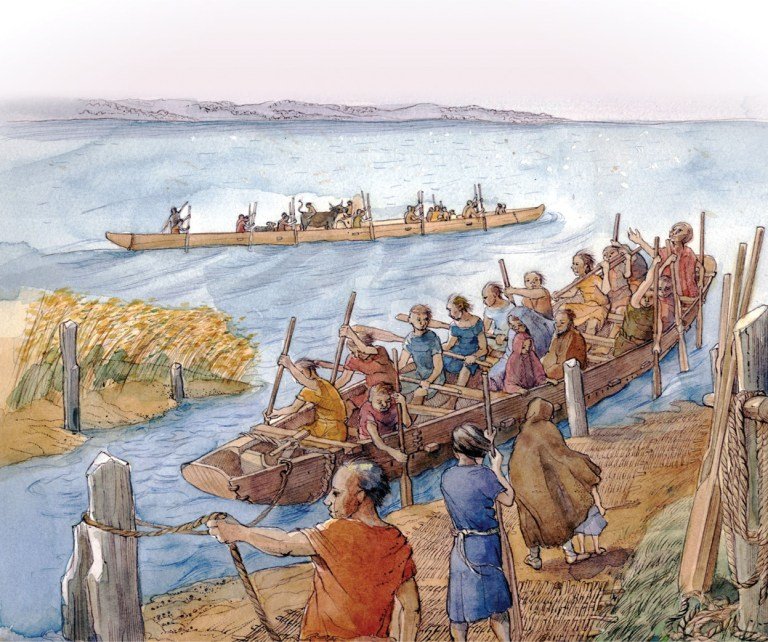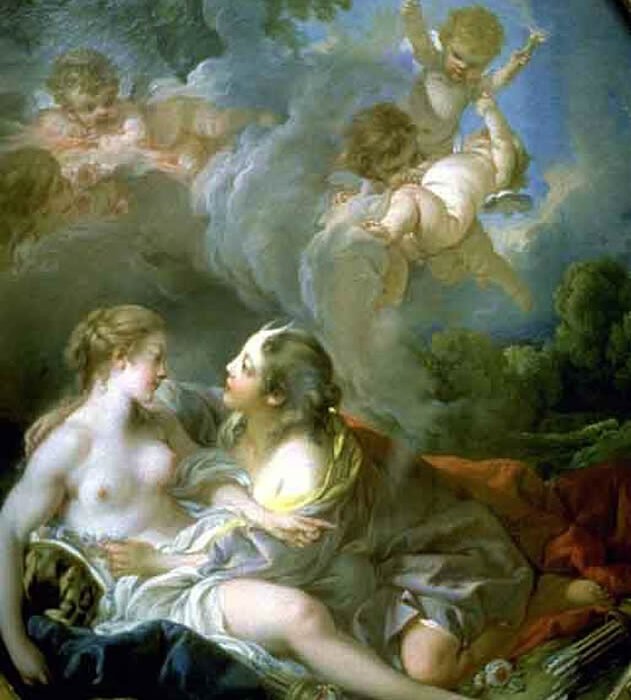Since the dawn of human civilization, the sky has been a canvas of wonder. Long before telescopes or space probes, our ancestors gazed upward and imagined that powerful beings ruled the sun, the moon, the stars, and the storms. These divine figures weren’t just myth—they were part of how ancient people understood their world. They governed time, controlled weather, dictated destiny, and shaped the very fabric of life.
From thunderous sky fathers to luminous solar deities and shadowy moon gods, cultures around the world spun grand tales of celestial rulers. These gods of the heavens were often the highest in the divine hierarchy—majestic, mysterious, and often wrathful. They rode lightning, hurled fire from the clouds, or glided across the skies in radiant chariots.
This article journeys across continents and through the ages to explore the fascinating pantheon of ancient sky gods—those mighty deities who ruled the vault of heaven, watched over humanity, and commanded awe from every corner of the earth.
The Sky as the Ultimate Throne: Why Ancient Gods Chose the Heavens
Before diving into specific gods, it’s worth asking: why were so many gods associated with the sky in the first place?
In ancient cosmologies, the heavens symbolized the unreachable and unknowable. The sky’s vastness made it a fitting realm for gods. It held the sun, which gave life; the stars, which mapped time and fate; the rain, which nourished the crops; and the storm, which could bring death or rebirth. The sky was both a source of blessing and terror—exactly the qualities one would ascribe to a god.
The high places—mountaintops, cliffs, towers—were seen as closer to the divine. Many civilizations built temples and ziggurats that pointed skyward, seeking connection with their gods. Birds, clouds, and celestial lights often carried spiritual significance. And so, over millennia, a dazzling constellation of sky gods came to dominate world mythology.
Ra, the Falcon-Headed Sun King of Egypt
Let’s begin in the desert lands of ancient Egypt, where the sun god Ra reigned supreme. Worshipped for over 2,000 years, Ra was seen as the creator of all life. He traveled across the sky each day in a solar barque—a divine boat—and journeyed through the underworld by night, only to be reborn each morning.
Depicted with a falcon’s head and a sun disk above it, Ra represented illumination, kingship, and the cosmic cycle of life and death. He was often merged with other gods—like Amun-Ra, a fusion of the hidden force (Amun) and the visible sun (Ra)—to emphasize his all-encompassing nature.
The Pharaohs called themselves “Sons of Ra,” claiming divine descent from the solar king. And as the bringer of light, Ra was not just a celestial god, but a moral compass—his light revealed truth and dispelled chaos.
Zeus, Thunderer of Olympus
In ancient Greece, the sky belonged to Zeus, king of the gods and ruler of Mount Olympus. With thunderbolts forged by the Cyclopes and a voice that could shake the earth, Zeus epitomized power, justice, and unpredictability.
The Greeks imagined Zeus seated on a heavenly throne, watching humanity and intervening with storms or blessings. As god of the sky, his domain included thunder, lightning, and rain. He was worshipped in vast temples with open roofs, so his divine essence could descend directly from the sky.
Zeus was a god of both order and passion. He enforced cosmic law but also pursued love affairs with mortals and immortals alike, fathering a vast divine lineage. His control of the skies was both literal and symbolic—he stood at the pinnacle of the Greek pantheon and was a mediator between the heavens and earth.
Indra, Vedic Lord of Storms and Thunder
Turning east to ancient India, we meet Indra, the mighty warrior of the Vedic scriptures. With lightning in his hand and storms at his command, Indra was the sky god who led the Devas (divine beings) against the forces of chaos and darkness.
Riding his celestial elephant Airavata, Indra was known as the slayer of Vritra, the great serpent that hoarded the waters. By defeating Vritra, Indra released the life-giving rains—a tale that metaphorically captured the monsoon’s importance to Indian agriculture.
Indra’s thunderbolt, the vajra, became a symbol of both destruction and spiritual power. Though he later declined in prominence in post-Vedic traditions, Indra’s early worship as king of the gods and ruler of the heavens reveals the central role the sky played in Vedic cosmology.
Tengri, the Eternal Blue Sky of the Steppe
Among the nomadic peoples of Central Asia, the sky god Tengri held a unique place. Not depicted in human form, Tengri was the vast, eternal blue sky itself—an ever-present force guiding fate and balance in the world.
Worshipped by the Huns, Turks, and Mongols, Tengri was the giver of divine legitimacy. Khans claimed to rule by “the mandate of Tengri,” and rituals were performed on mountain tops or open plains under the open sky to honor him.
Tengri wasn’t just a deity—he was the cosmos. His presence was impartial but deeply spiritual. Even the mighty Genghis Khan claimed his victories were destined by the sky god, and that he was the “Son of Tengri.”
Itzamna, Maya Lord of the Sky and Creator of the World
Across the ocean in the ancient Americas, the Maya believed in a sky god named Itzamna—a wise, creator deity often shown with a majestic headdress and the features of an aged sage.
Itzamna ruled the upper world and was associated with writing, time, and the sun. He was believed to have invented writing and calendar systems, crucial elements in the advanced Maya civilization.
The Maya viewed the heavens as a layered domain, filled with gods, serpents, and cosmic birds. Itzamna dwelled at the top of this celestial hierarchy. He wasn’t a thunder-wielder, but rather a divine architect who created the universe and held dominion over the cosmic order.
Anu, Sumerian God of the Vault of Heaven
Among the oldest known civilizations, the Sumerians of Mesopotamia worshipped Anu (or An), the god of the sky and the highest deity in their pantheon.
Anu represented the celestial firmament—the top of the universe. Though he rarely intervened in mortal affairs, his name invoked supreme authority. Kingship and divine judgment were said to originate from Anu’s throne above the stars.
His presence shaped the Sumerian cosmic triad: Anu (sky), Enlil (air), and Enki (water). Anu’s children and grandchildren—powerful gods in their own right—carried out his will on earth, but Anu’s position as the divine overseer in the heavens was unmatched.
The Norse Sky: Odin, Thor, and the Realm Above
In the cold, rugged lands of the Norse, the sky was not ruled by one god, but shared by powerful deities like Odin and Thor.
Odin, the All-Father, ruled Asgard—a celestial realm connected to the earth by the rainbow bridge Bifröst. With his single eye and raven familiars, Odin was a god of wisdom, war, and prophecy. He communed with the stars and sought cosmic secrets, often traveling through the sky to gather knowledge.
Thor, on the other hand, was the thunder god. His mighty hammer Mjölnir cracked like lightning, and his chariot, pulled by goats, rumbled across the skies in storms. Thor protected humanity from giants, embodying both brute strength and divine justice.
Together, they formed a dynamic divine duo—Odin representing the spiritual and sky-borne intellect, and Thor, the raw power of weather and the heavens.
Amaterasu, the Shining Goddess of the Rising Sun
In Shinto mythology, Amaterasu is the sun goddess and one of Japan’s most venerated deities. She is said to have emerged from the left eye of the god Izanagi and became the ruler of the heavens.
Amaterasu’s light was so vital that when she hid herself in a cave—angry at her brother’s actions—the world was plunged into darkness. The other gods lured her out with music and laughter, restoring the sun’s light to the world.
Japanese emperors trace their lineage to Amaterasu, reinforcing her status as a divine ancestor. She is honored in the Grand Shrine of Ise, where her presence as the celestial queen is still deeply felt in Japanese culture.
Sky Gods of Africa: Nyame, Nzambi, and the Cosmic Sky
In various African traditions, sky gods played crucial roles in creation and moral order. Among the Akan of West Africa, Nyame is the supreme sky god, creator of all things, and the source of life and death.
Nyame resides in the sky, from where he sends rain and blessings. His daughter, Asase Yaa, represents the earth, and the two are seen as a divine balance between sky and soil.
In Congo, Nzambi Mpungu is the creator god of the sky who gave rise to all life. These gods often embody both spiritual and elemental forces—governing not just the heavens, but the harmony of nature and society.
The Universality of Sky Deities: What They Reveal About Us
What unites all these diverse sky gods is their embodiment of grandeur and power. Whether it’s Ra sailing his solar boat, Zeus hurling thunder, or Amaterasu lighting the land, sky deities are mirrors of our awe for the cosmos.
They reflect our ancestors’ need to make sense of the world—to explain the stars, the storms, the seasons. They also provide a symbolic language for authority, morality, and the human place in the universe.
Sky gods often stand at the top of divine hierarchies, reminding us that in ancient worldviews, the heavens weren’t just above—they were sacred, intelligent, and full of meaning.
Conclusion: The Eternal Skies and the Gods Who Dwell There
Even today, as satellites orbit our planet and science reveals the structure of the universe, the ancient sky gods still resonate. They remind us of a time when myth and cosmos were one, when the stars told stories, and when thunder echoed with divine intent.
The gods of the sky may not stride the clouds anymore, but their legacies live on—in language, ritual, literature, and even in the names of the planets. They are among the most enduring figures of human imagination—shining reminders that we’ve always looked upward, searching for the divine.





